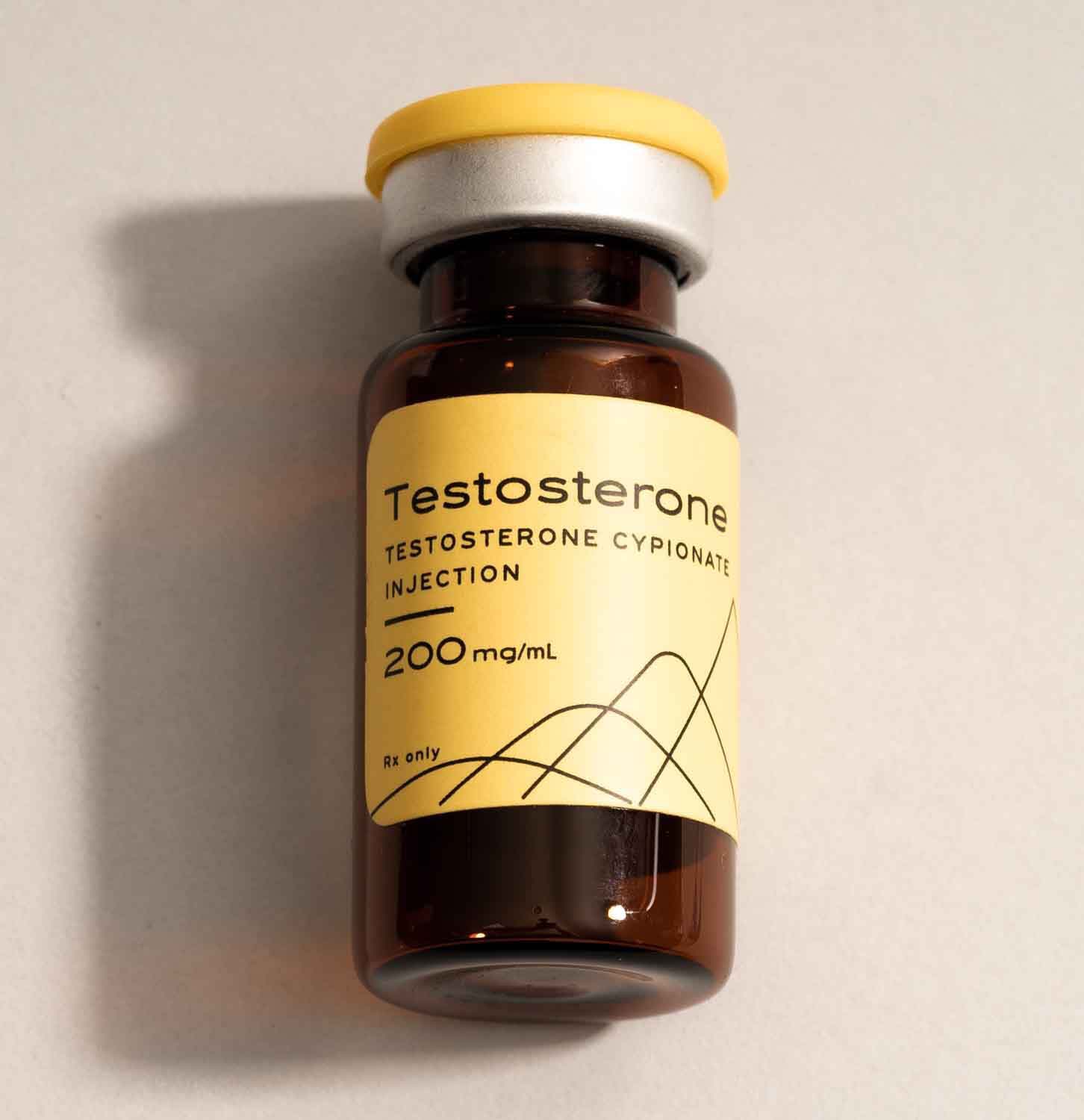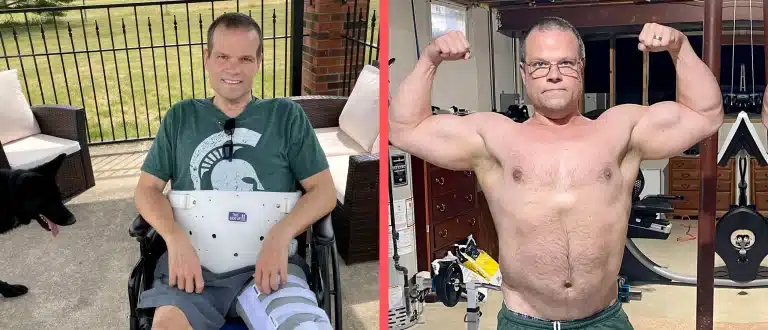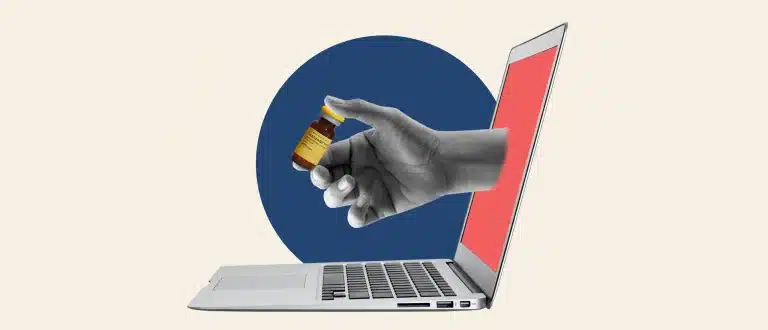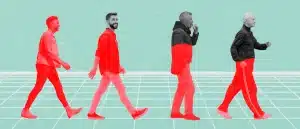13 Sneaky Signs Your Testosterone Is Too Low
Keep an eye out for these red flags for dwindling T levels.
As men get older, declining testosterone levels are as inevitable as death and taxes. Around the age of 30, men’s T levels start to dwindle by about 1 percent a year. But for some men, that drop is more of a cliff dive than a steady downhill. Declining levels of testosterone can bring on a host of symptoms that can make you feel downright lousy. Symptoms of low testosterone in men can range from weight gain and erectile dysfunction to mood shifts and cognitive problems.
If your levels of testosterone drop below 300 ng/dL and you experience unpleasant signs of low testosterone, you officially have a medical condition known as testosterone deficiency (TD) or male hypogonadism.
As many as 40% of men 45 and older have low T. And while low testosterone symptoms in men are wide-ranging, “testosterone deficiency is often the cause when nothing else is readily apparent,” says urologist Joshua Calvert, M.D., a physician who works with Hone Health.
And it’s a growing concern. A study published in the Journal of Clinical Endocrinology & Metabolism reported that today’s average 30-year-old man has approximately 17 percent less testosterone (1) than a 30-year-old male at the start of the 21st century.
Why should you care? Unchecked low testosterone could jeopardize your longevity. “Recent studies have shown an all cause mortality increase in men with lower testosterone levels,” says family medicine doctor and Medical Director for Broad Health Jim Staheli, D.O. “Early mortality may not be entirely related to low testosterone levels, but may be caused by that which lowers a man’s testosterone level”—such as toxin exposure and obesity.
Plus, plenty of men walk around feeling crappy for years, not even thinking their hormones could be to blame. “A lot of guys walk into clinics running on fumes when it comes to their testosterone levels,” says Calvert.
Some of the symptoms of low testosterone in a man are subtle, while others are more obvious. And many of the symptoms of low testosterone mirror symptoms of other illnesses and conditions, making it even harder to ID the cause.
Calvert says that by the time patients make an appointment with him, they’ve typically exhausted all other measures to figure out why they feel so awful. Your goal: don’t fall into that trap.
If you’re thinking, “How do I know if I have low testosterone?” stress no more. Instead, familiarize yourself with the biggest symptoms of low testosterone in men, so that if you’re experiencing them, you can get help.
About the Experts:
Dr. Joshua Calvert, M.D., is a urologist and member of The Edge’s medical advisory board. Specific areas of interest include vasectomy and vasectomy reversal, Peyronie’s disease, testosterone management, and male infertility.
Dr. James Staheli, D.O., is the Medical Director for Broad Health and a family medicine doctor in Atlanta, Georgia who specializes in hormone treatment for men.
Hone’s at-home testosterone assessment is the simplest way to uncover whether your levels are low. If you qualify for treatment, TRT can be sent right to your door.
Low Testosterone
Before jumping into the symptoms of low testosterone, it’s helpful to have a basic understanding of testosterone and the role the hormone plays in men’s health. We’ve got a whole 101 on testosterone, but here’s the Cliff’s Notes version:
Testosterone is the primary male sex hormone. Your hypothalamus releases gonadotropin-releasing hormone (GnRH), which triggers your pituitary gland to release luteinizing hormone (LH). LH causes Leydig cells in your testicles to produce testosterone. From there, testosterone enters the bloodstream and delivers messages throughout your body to help regulate several critical functions and processes.
Testosterone is involved in all the following, and more:
- Regulating your sex drive
- Red blood cell production
- Sperm production
- Your body’s ability to store and burn fat
- Regulating your emotions and mood
- Fertility
- Mental clarity and focus
- Maintaining bone strength
- Energy levels
Symptoms of Low Testosterone in Men
The only way to know for sure if your testosterone levels are where they should be is to get a blood test to assess your hormones (including free and total testosterone levels). You can do this from your own home by ordering Hone’s at-home testosterone test. But the symptoms below are all red flags that your testosterone levels might be in decline.
1. Low Libido
While medications, relationship struggles, and illness can all make you lose interest in sex, a low sex drive is one of the most common symptoms of low testosterone.
A drastic drop in testosterone can quickly turn your sex drive into a sex putter. “Study after study indicates that decreased libido is the symptom that is most indicative of testosterone deficiency,” says Calvert. “This is also an area where most men notice an improvement when they get on treatment.”
Other low testosterone symptoms—gaining weight, losing hair, and a lack of energy can also make your interest in sex decline.
2. You’re Not Seeing Gym Gains
If you’ve been more devoted than ever to your fitness routine, but not noticing any gains, it could be a sign of low testosterone in men.
“Testosterone stimulates the growth of muscles and increases muscle strength,” says Calvert. Your muscle cells have receptors called androgen receptors. When testosterone binds to the receptors, it helps your muscles grow. But when T levels flag, the muscle can start to degrade.
“In simple terms, if you have more circulating testosterone, your muscle cells are more active and they grow,” says Calvert. Take away the T, and adding muscle mass is almost impossible.

3. You Have Erectile Dysfunction
If you’re noticing it’s hard to get and keep an erection, it’s worth getting your testosterone levels checked.
“The process of getting an erection is complex both physiologically and psychologically, and many men notice decreased spontaneous erections (2) as the first sign of low testosterone,” says Calvert.
The relationship isn’t completely understood, but researchers suspect that testosterone acts as a vasodilator, allowing more blood flow into the penis, says Calvert. Without enough testosterone, blood may not be able to enter the penis and allow it to get rigid enough for sex.
4. You’re Moody and Irritable
The grumpy old man trope exists for a reason: many men get cranky with age. But if you notice that you’re feeling depressed or irritable without reason, it could be a symptom of low testosterone. One small 2016 study (3) found that men with low T between the ages of 21-41 were more likely to be diagnosed with depression than the control group.
Researchers are still trying to understand the link between testosterone and mood, but they know that testosterone does cross into the brain where it may affect the production of brain cells, create new neural connections that skew thoughts toward the positive (4), and regulate feel-good neurotransmitters. Without enough circulating testosterone, those brain benefits may not happen.
Plus, “other symptoms of low T—like fatigue, depression, mental fog, low libido, and loss of energy—can make you cranky,” Staheli says. “It’s the perfect storm.”
Many men with diagnosed testosterone deficiency notice a dramatic improvement in their mood after starting testosterone replacement treatment, says Calvert.
Hone’s at-home testosterone assessment is the simplest way to uncover whether your levels are low. If you qualify for treatment, TRT can be sent right to your door.
5. Your Memory and Concentration Are Shot
While you can blame forgetfulness or not feeling as sharp as you once were on getting older, these could also be signs that your testosterone is low. A 2021 study (5) found that men with higher concentrations of testosterone reported better scores on the Consortium to Establish a Registry for Alzheimer’s Disease (CERAD) test compared to men with lower concentrations.
Research into how low T levels affect memory hasn’t come up with a definitive cause-and-effect relationship. But it’s clear that as men age and their T levels drop, their cognitive abilities decline, too. And anecdotally, many men express that they feel a mental fog lifting off of them when they start on TRT, says Calvert.
6. You’ve Put on Weight
You already know that without enough testosterone, fat-burning muscles can’t grow, and any excess calories you eat risk being stored as fat. But that’s not the only connection between low T and weight gain.
Fat cells produce an enzyme called aromatase, which converts testosterone to estrogen— and an imbalance in your testosterone and estrogen levels can increase body fat. High aromatase and estrogen activity reduces the production of gonadotropin-releasing hormone (GnRH), which in turn reduces testosterone production.
Basically, it becomes a vicious cycle: excess fat causes your testosterone levels to decline, which causes you to gain more weight.
Treating low testosterone often leads to weight loss.
“As your testosterone levels normalize, it helps to build and maintain muscle mass, which increases the number of calories you burn, improves cardio-metabolic function, increases motivation, and enhances physical activity,” Staheli notes. “All of which can lower the risk of weight gain and obesity.”
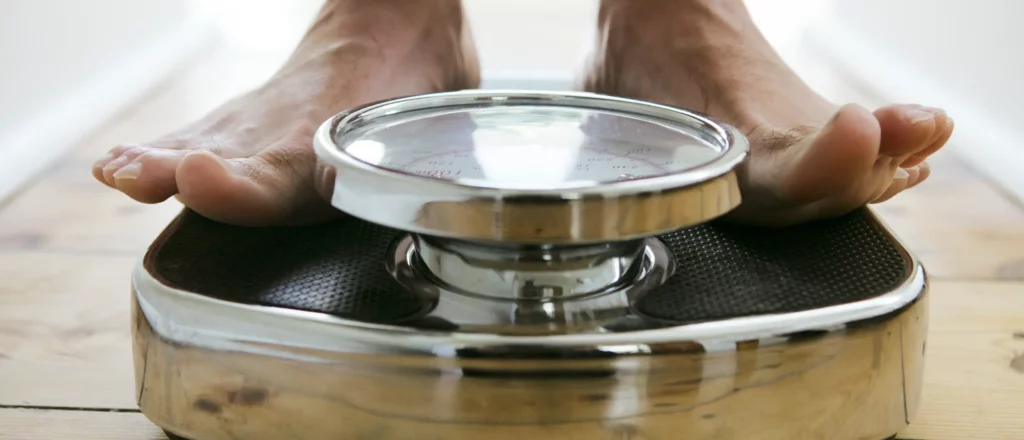
7. You’ve Developed Man Boobs
If you do put on excess weight, you may find it in an unwanted area: your chest. The technical term for breast growth in men is ‘gynecomastia’, and can be related to an increased level of estrogen in comparison to testosterone, says Calvert.
Gynecomastia is usually not harmful but the breast tissue can be sore, and many men find it embarrassing, especially during summer months when you’re baring your chest at the pool or backyard barbeques.
8. You’re Losing Hair
Losing facial and body hair can also be a symptom of low testosterone in men.
However, hair loss on the head is typically not a sign of low testosterone.
Male pattern baldness is predominantly driven by levels of dihydrotestosterone (DHT), which is made from testosterone by an enzyme. DHT interferes with your natural growth cycle, shrinking and shortening the hair making it easier for it to fall out and more difficult for it to grow back.
Today’s average 30-year-old man has approximately 17 percent less testosterone than a 30-year-old male at the start of the 21st century.
9. You’re Having Hot Flashes
This isn’t just something women experience during menopause. Men, especially those with low T, can get hot flashes, too.
“Low levels of testosterone and decreased estrogen can both lead to hot flashes because they both stimulate cortisol release,” says Calvert. “This increased cortisol tells the brain to turn its thermostat up.”
10. You Struggle With Sleep
“It’s ironic because low testosterone can lead to insomnia and insomnia can lead to low testosterone,” Staheli notes.
Sleep problems, including sleep apnea, can also be a symptom of low testosterone in men. One theory why: as testosterone goes down, levels of cortisol climb. And cortisol contributes to wakefulness, resulting in shallower and shorter sleep, according to research (6) in the journal Sleep.
“Conversely, testosterone increases during REM sleep,” Staheli says. “If this cycle is disrupted—due to insomnia—men will have lower testosterone levels, which can lead to a worsening of insomnia.”
11. You’re Tired All The Time
Fatigue is a common sign of low testosterone. You might feel like you just don’t have the energy that you’re used to. Or you might be incredibly tired, all the time.
According to the American Urological Association, men with low testosterone levels have a higher prevalence of fatigue than men with normal testosterone levels.
Researchers aren’t sure why fatigue is such a common symptom of low testosterone in men, but it could be related to sleep disturbances. Testosterone production peaks during deep sleep. If you’re not getting adequate nighttime rest, your T levels may not reach their daytime peak. In one JAMA study (7), daytime testosterone levels decreased by 10-15% among healthy young men who restricted sleep to 5 hours per night for one week. Of course, skimping on sleep will make you tired in its own right, but there could be a double threat.
“Fortunately an increased boost in energy is one of the first things I hear from my guys I put on TRT,” says Calvert.
12. Your Bones May Be Weaker
Men with low T may be more prone to broken bones and osteoporosis.
“Bone metabolism is complex and related to two main cell types,” says Calvert. There are osteoblasts, which build the bone, and osteoclasts that break it down. Testosterone stimulates osteoblasts to deposit bone, so if your T levels are low, you may make less bone.
What’s more, estrogen (which remember is a byproduct of T in men), stops osteoclast activity. If your T is low, your estrogen levels will also be low, and you’ll have decreased bone density.
13. You’re Anemic
Another way low T can make you feel tired and weak is by causing anemia, a condition in which you lack enough healthy red blood cells to carry adequate oxygen to your organs and tissues.
“Testosterone stimulates the production of a hormone called erythropoietin (EPO) and decreases the production of a hormone called hepcidin,” Staheli says. “EPO stimulates the production of red blood cells, while the reduction of hepcidin allows for the absorption of dietary iron needed for red blood cell maturation.”
According to research in the Journal of the American Medical Association, there is a link between testosterone deficiency and anemia in older men (8).
Some other symptoms of anemia include problems concentrating, dizziness, chest pain, an abnormally rapid heart rate, shortness of breath, and pale skin.
Hone’s at-home testosterone assessment is the simplest way to uncover whether your levels are low. If you qualify for treatment, TRT can be sent right to your door.
Causes of Low Testosterone
Injuries to the testicles and cancer treatments like chemotherapy and radiation can cause low testosterone levels. So can some medications (including hormones used to treat prostate cancer), aging and chronic health conditions including:
- Type 2 diabetes
- Kidney and liver disease
- Obesity
- HIV/AIDS
- Pituitary gland or hypothalamus tumors
When T levels decrease below 300 ng/dL and start causing symptoms, it’s called hypogonadism. While you can take some steps on your own to boost testosterone naturally, including eating certain foods, medical treatment is usually needed to bring testosterone levels up to a normal range.
Treatment Options for Low T
The most often prescribed fix for low T is testosterone replacement therapy (TRT), where supplemental testosterone treatment is delivered via injection, pills, tablets, topical gel and creams, patches, troches, or other methods.
“Millions of American men have been diagnosed with low testosterone and are using prescription testosterone in order to reverse their fatigue, low drive, mental fog, muscle atrophy, depression, anxiety, insomnia, low libido, erectile dysfunction,” Staheli says.
If maintaining fertility is a concern (TRT can lower sperm count), medications including clomiphene citrate, or Clomid, can be used to treat symptoms of low T while protecting against infertility.
It’s important to work with a licensed healthcare provider, who can monitor your levels and discuss possible side effects.
The Bottom Line
There are many symptoms of low testosterone in men, including flagging energy levels, low libido, weight gain, and hair loss. If you are experiencing any of these symptoms, consider getting your testosterone levels tested.
References
1. Thomas G. Travison, et al (2007). A Population-Level Decline in Serum Testosterone Levels in American Men.
2. Maggi, M, et al (2008). Controversial aspects of testosterone in the regulation of sexual function in late-onset hypogonadism.
3. Rodgers Stephanie, et al. (2015), Serum Testosterone Levels and Symptom-Based Depression Subtypes in Men
4. Walther A, Breidenstein J, Miller R. (2019). Association of Testosterone Treatment With Alleviation of Depressive Symptoms in Men: A Systematic Review and Meta-analysis.
5. Dong Xue, et al (2021). Low Serum Testosterone Concentrations Are Associated With Poor Cognitive Performance in Older Men but Not Women.
6. Dijk DJ, et al (2021). Amplitude reduction and phase shifts of melatonin, cortisol and other circadian rhythms after a gradual advance of sleep and light exposure in humans.
7. Leproult, Rachel, and Eve Van Cauter.(2011) Effect of 1 week of sleep restriction on testosterone levels in young healthy men.
8. Roy CN, et al. (2017) Association of Testosterone Levels With Anemia in Older Men: A Controlled Clinical Trial.




